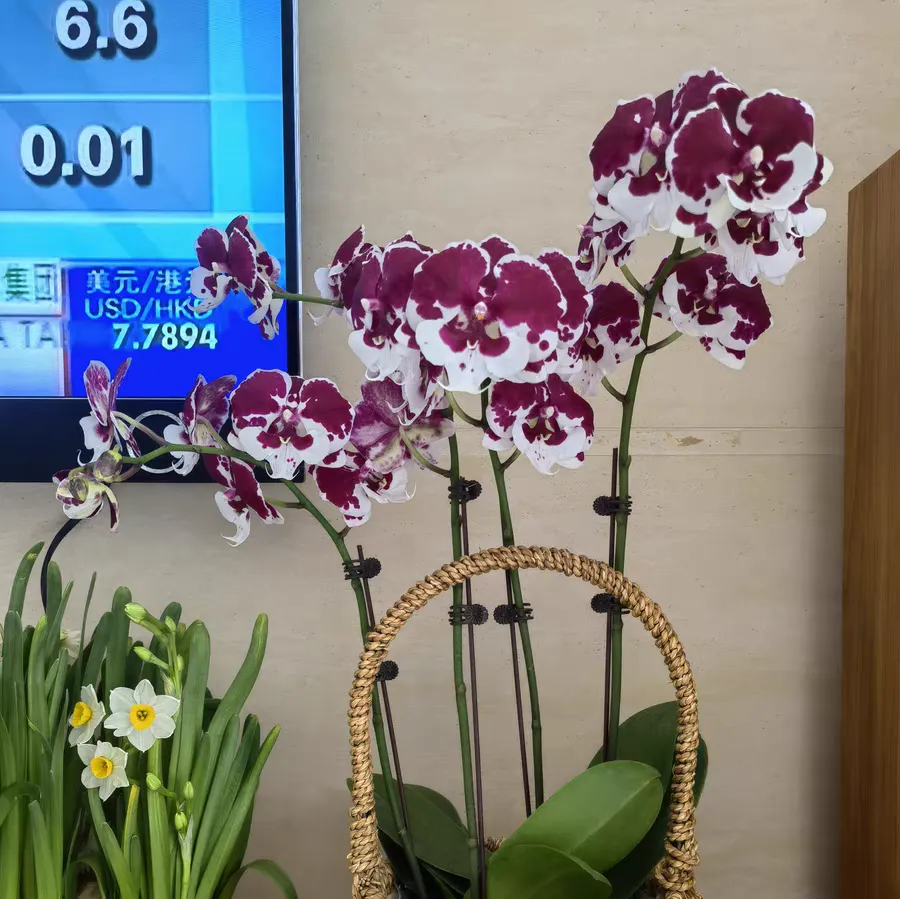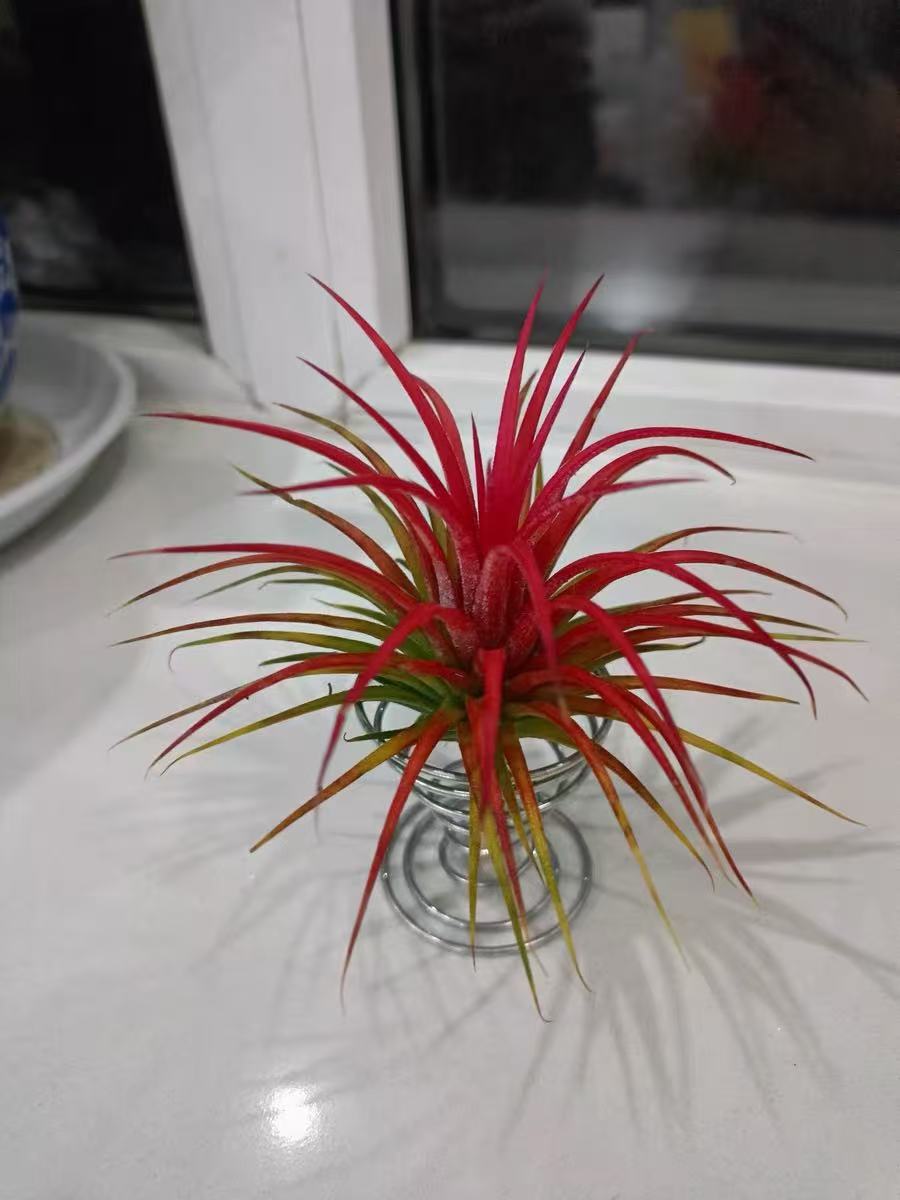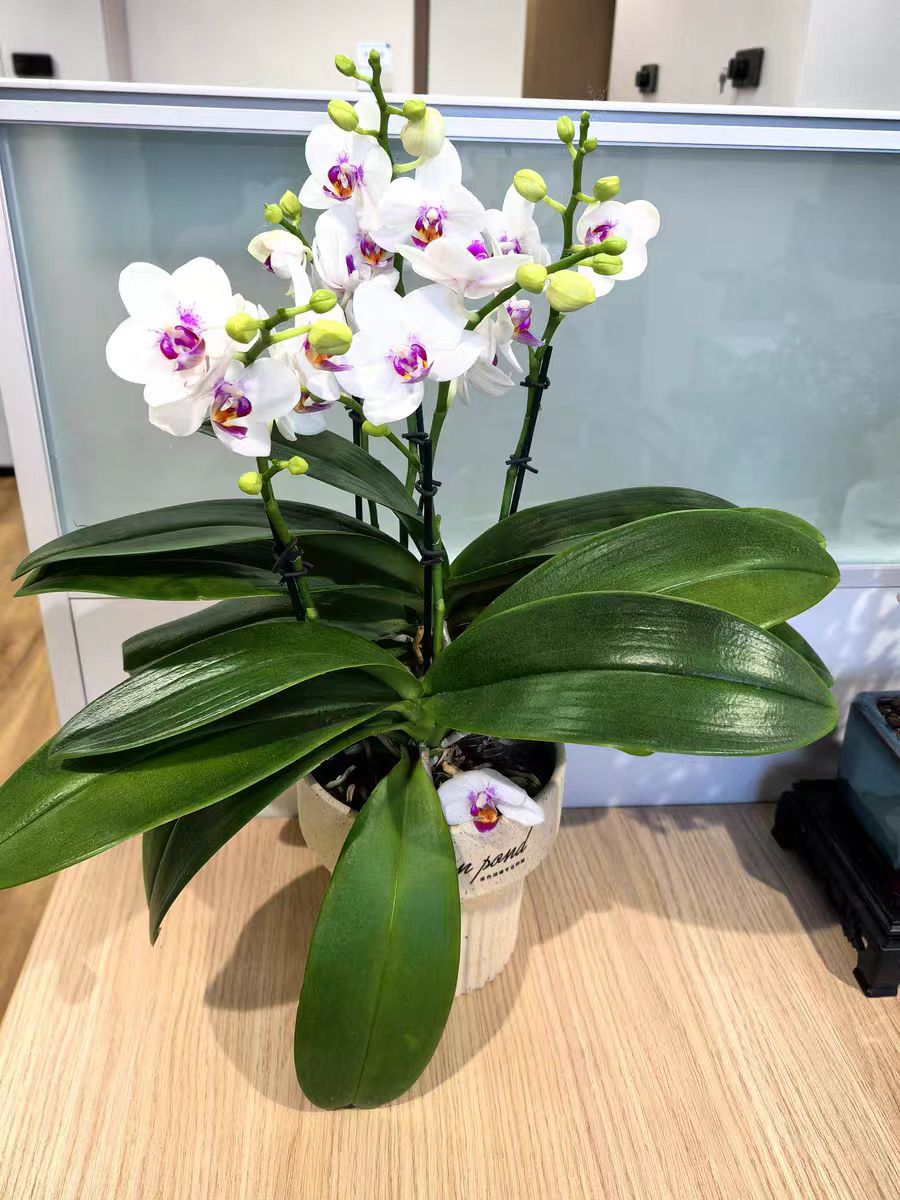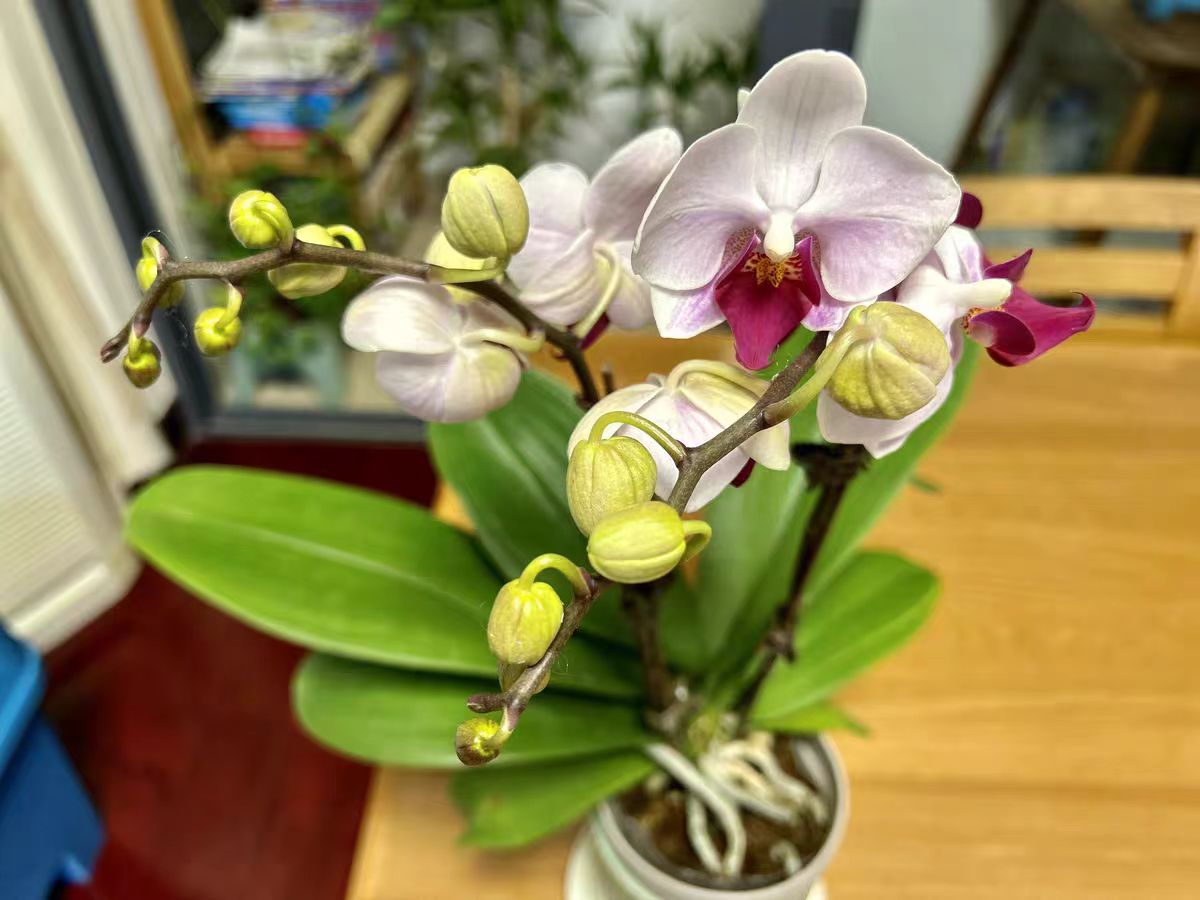Phalaenopsis "One Thousand and One Nights" is a European variety from Funari in the Netherlands. It has a medium to large flower type. The white petals are dotted with red斑纹 like splashes of ink, and the large lip shape is particularly unique, which is really eye-catching. Placing it at home can instantly enhance the style.
Phalaenopsis "One Thousand and One Nights" is relatively easy to care for. Its flowering period usually ranges from autumn and winter to the next spring. If properly maintained, the single flowering period can last for 2 to 3 months. It generally enters the flowering period around November, and the flowers bloom successively. However, during the management of the flowering period, some flower lovers will encounter the problem that the flower buds cannot open. This is mostly caused by inappropriate temperature. The suitable growth temperature for Phalaenopsis "One Thousand and One Nights" is 18 - 28℃. When the temperature is lower than 15℃, the growth of the flowers is hindered, and the flower buds are difficult to open normally. In addition, too low air humidity and insufficient light will also affect the development of the flower buds. In case of this situation, the plant needs to be moved to a suitable environment, and the light and humidity should be moderately increased.
Daily Maintenance and Precautions
1. Light Management: Phalaenopsis "One Thousand and One Nights" likes soft scattered light. It can be placed on an east-facing or north-facing windowsill to avoid direct strong light. In summer, it is necessary to properly shade to prevent the leaves from being sunburned; in winter, the plant can be exposed to more sunlight to promote photosynthesis.
2. Water Supply: Follow the principle of "watering when the soil is dry and then thoroughly". Insert your finger about 2 to 3 centimeters into the substrate. Water when it feels dry. Water thoroughly so that the excess water flows out from the drainage holes at the bottom of the pot. Do not let water accumulate, otherwise it will lead to root rot. In addition, it is best to water in the morning on a sunny day to facilitate the plant's absorption of water.
3. Nutrient Supplementation: During the peak growing season, apply a thin liquid fertilizer once a month to provide sufficient nutrients for the plant. Before the flowering period, increase the application of phosphorus and potassium fertilizers to promote the differentiation of flower buds. After entering the flowering period, reduce the frequency of fertilization to avoid fertilizer damage.
4. Soil Replacement: Phalaenopsis "One Thousand and One Nights" is suitable for growing in a loose and breathable substrate such as sphagnum moss or orchid stones. The substrate needs to be replaced once every 1 to 2 years to ensure the air permeability of the roots and the absorption of nutrients.
Is Phalaenopsis "One Thousand and One Nights" a large - flowered variety?

Share with
Tagged in :




Leave a Reply